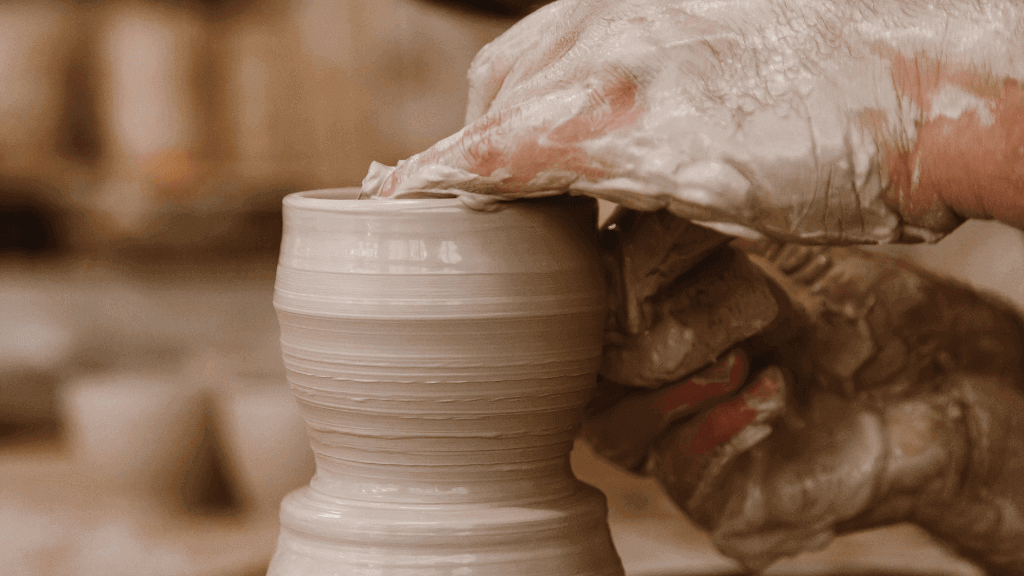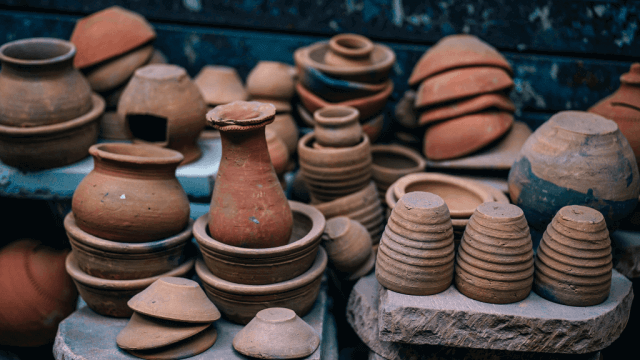The length of time it takes for pottery clay to dry depends on several factors, such as the thickness and complexity of the piece, as well as the drying environment. Generally, it should take 1-2 weeks for pottery to dry , with an hour per half inch of wall thickness recommended when using a fan or other heat source to speed up the process.
What factors affect the drying time of pottery, and how do they impact the final outcome of the piece?
The drying time of pottery is affected by factors such as the size and complexity of the piece, the humidity and heat of the environment, and the clay body used. Clay shrinks during both drying and firing, with different clay bodies shrinking at different rates. Pottery should be completely dry before firing to avoid cracking or breaking in the kiln.
What are some common techniques that potters use to speed up or slow down the drying process of their pieces, and why might they choose one technique over another?
Potters use a variety of techniques to speed up or slow down the drying process of their pieces. To speed up the process, potters may use fans or heaters to increase air circulation and reduce humidity. To slow down the process, potters may tent their pieces with plastic or fabric to create a humid environment. Pottery should be dried slowly and evenly for best results , so potters may choose one technique over another depending on how quickly they need their pieces to dry.
How does the humidity and temperature of the environment affect the drying time of pottery, and what measures can potters take to control these variables in their workspace?
The humidity and temperature of the environment can affect the drying time of pottery, with both factors needing to be controlled under strict guidelines to avoid rapid drying or cracking. Potters can take measures such as allowing extra time for drying in humid climates , using fans to increase air circulation , and controlling the thickness of their pieces to help control these variables in their workspace.
How does the thickness and size of a piece of pottery impact its drying time, and are there any special considerations that potters must make when working with larger or thicker pieces?
The thickness and size of a piece of pottery can significantly impact its drying time, as thicker or larger pieces require more water to migrate from the deeper levels of clay to the surface. Potters must take special considerations when working with larger or thicker pieces, such as placing them on batts under cloth and plastic to slow and even out the drying process. Additionally, potters should be aware of clay body shrinkage, which refers to the loss of size that occurs throughout the drying and firing process. Standardized production is usually associated with craft specialization, while domestic potters are more likely to produce variable work. Finally, tiles should be thick enough so they don’t warp; an 8″ square tile should be at least one half inch thick.
What are some common problems that can occur if pottery is not allowed to dry properly, and how can potters avoid or correct these issues?
Common problems that can occur if pottery is not allowed to dry properly include muscle injuries from sitting at the potter’s wheel for too long , cuts and abrasions from moving parts of kickwheels , selecting the wrong clay, not enough water on the clay, the clay being too wet or hard, and not being wedged correctly. To avoid or correct these issues, potters should ensure they have good posture when working at the wheel , use protective gear such as gloves when handling wet clay , select the right type of clay for their project , add enough water to their clay before centering it on the wheel , make sure their clay is neither too wet nor too hard before centering it on the wheel , and wedge their clay thoroughly before using it. Additionally, potters should also be able to control the heat, length and drying capacity of their kiln in order to prevent uneven firing which can cause cracks in pottery.











